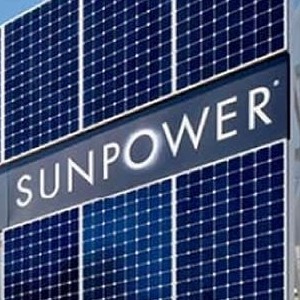
In recent months, the solar energy industry has been rocked by news of SunPower Corporation’s financial struggles and potential bankruptcy.
This development has sent shockwaves through the sector, affecting SunPower and its network of dealers and installers.
This crisis has caused widespread financial distress among its network of solar installers. Recent reports indicate that numerous SunPower dealers nationwide face closure or bankruptcy, primarily due to substantial unpaid debts from SunPower for completed service work. This has created a domino effect within the industry, threatening the stability of local solar markets and the livelihoods of countless workers.
Many dealers report that SunPower owes them hundreds of thousands of dollars in back pay for service work already performed. This financial strain has pushed numerous small to medium-sized solar businesses to the brink of insolvency.
The lack of payment affects these companies’ ability to meet their financial obligations and hampers their capacity to take on new projects or maintain their workforce.
As a result, the solar installation and service landscape in many regions is rapidly contracting, potentially leaving customers with limited solar panel installation and maintenance options.
This breakdown in the dealer network could have long-lasting repercussions for the industry, eroding consumer trust and potentially slowing the adoption of solar energy in affected areas.
SunPower’s Financial Downfall
SunPower, once a titan in the solar industry, has been grappling with mounting financial pressures that have pushed the company to the brink of bankruptcy. The root causes of this decline are multifaceted, but several key factors have contributed to the company’s current predicament.
SunPower’s Auditor Resigning
SunPower filed an amended Form 8-K on July 12, 2024, revealing more details about Ernst & Young LLP (EY) resigning as their independent auditor. The resignation came after disagreements over audit scope and disclosure obligations. EY insisted on being informed about any allegations of fraud involving current or former executives responsible for financial reporting.
SunPower’s disclosures did not fully meet EY’s expectations, leading to unresolved issues and EY’s decision to resign. EY’s letter to the SEC confirmed some of SunPower’s statements but highlighted their disagreement over the audit scope issue. Notably, these disagreements did not involve current senior management, though there were concerns that executives within the company may have committed fraud.
Loss of Major Financiers
One of the most significant blows to SunPower’s financial stability has been the loss of its biggest financiers. TotalEnergies and Global Infrastructure Partners, two major players that had previously backed SunPower, have allegedly pulled out their support.
This loss of financial backing has left SunPower scrambling to find alternative funding sources and has severely impacted its ability to maintain normal operations.
Cash Flow Issues and Credit Offsetting
SunPower’s financial strategy of offsetting debts with credits rather than cash has led to severe cash flow problems. While this approach may have provided short-term relief, it has created a ripple effect of financial instability throughout its network of dealers and installers.
The company’s inability to make cash payments has left many dealers in precarious financial positions.
Loss Of Quality Manufacturing
A crucial strategic error contributed to SunPower’s downfall: its decision to move beyond its core competency of manufacturing high-quality solar modules. The acquisition of SolarBridge Technologies in 2014 marked a pivotal moment in SunPower’s history, leading to the company’s ill-fated push into the AC module market.
Before this move, SunPower had built a reputation for producing highly reliable solar modules with an impressive failure rate of only 20 modules per million. However, the introduction of AC modules following the SolarBridge acquisition proved disastrous. The failure rate for these new products skyrocketed to approximately 20%, a staggering 1000-fold increase from their previous standards. Despite mounting evidence of these failures, SunPower initially refused to acknowledge the extent of the problem, a decision that would have severe repercussions.
The company’s reluctance to address these issues head-on ultimately led to legal troubles. A class action lawsuit was filed against SunPower, alleging that the company had sold defective solar panels. In 2022, SunPower agreed to a $4.75 million settlement to resolve these claims. This legal defeat resulted in significant financial costs and severely damaged SunPower’s reputation for quality and reliability, a cornerstone of its brand identity.
Restructuring and Division
In an attempt to salvage its operations, SunPower has undergone a significant restructuring, dividing itself into three distinct divisions: new residential, residential lease, and warranty.
This reorganization aims to streamline operations and isolate profitable segments of the business. However, it remains to be seen whether this strategy will be enough to turn the company’s fortunes around.
Stock Price and Junk Bond Rating
The financial community’s lack of confidence in SunPower is reflected in its plummeted stock price.
This has eroded investor confidence and led to a withdrawal of support from major financial backers.
A potential junk bond rating makes it more difficult for the company to secure additional funding and signals to investors and partners that the company’s future is highly uncertain.
Impact on Dealers

SunPower’s financial troubles have had a cascading effect on its network of dealers and installers.
Operational Disruptions
Many Dealers, heavily reliant on SunPower, have experienced significant operational disruptions. Companies have been forced to halt installations for SunPower, leading to the unusual situation with half-finished installations and the sealing up of roof holes from incomplete projects.
This disruption affects a dealer’s ability to complete jobs and damages its reputation with customers.
Financial Strain
The financial impact on their dealers has been severe. Many Sunpower dealers have been burning through cash reserves since September, largely due to SunPower’s inability to pay for lease installations and service work. This has led to a critical cash flow situation, forcing many solar installers to consider drastic measures to stay afloat.
Workforce Reductions and Pay Cuts
The ripple effects of SunPower’s financial struggles have hit many SunPower installers hard. A solar installer in Southern California recently told Solar Insure that it is undergoing significant restructuring, with a layoff of 110 employees across various departments. This reduction in workforce is a direct response to the critical cash flow issues faced by the company. To conserve resources, executive pay cuts and stock compensation have been implemented.
We have been told that their financial health is so precarious that the company has resorted to asset sales to stay afloat. The closure of their Arizona operations signifies a strategic shift to focus on cash systems for installations, abandoning less profitable ventures. These measures highlight the desperate situation it finds itself in, struggling to survive amidst the financial chaos brought on by SunPower’s instability.
Shift in Business Model
Many former Sunpower dealers have been compelled to shift their focus from lease installations to cash systems for installations. This pivot directly results from SunPower’s financial issues and represents a significant change in their business model.
Broader Industry Impact
The troubles facing SunPower and its dealers are not occurring in isolation but are indicative of broader challenges within the solar energy industry.
Industry Consolidation
The potential bankruptcy of a major player like SunPower could lead to significant industry consolidation. Smaller companies and dealers may be forced to close or be absorbed by larger entities, potentially reducing competition and consumer choice in the market.
Loss of Consumer Confidence
The high-profile nature of SunPower’s struggles could damage consumer confidence in the solar energy sector. Potential customers may become wary of long-term investments in solar technology if they perceive instability in the industry.
Supply Chain Disruptions
Major companies’ financial troubles, like SunPower’s, can have ripple effects throughout the supply chain. For example, a solar company’s financial struggles could lead to the failure of its suppliers, such as CED Greentech, further destabilizing the industry.
Labor Market Shifts
The layoffs at companies like are likely to create a surplus of skilled labor in the solar industry. This could lead to increased competition for remaining jobs and potentially drive down wages in the short term.
Conclusion – Will SunPower Declare Bankruptcy?
The potential bankruptcy of SunPower represents a significant moment of upheaval for the solar energy industry. Its effects are far-reaching, impacting SunPower and its network of dealers, suppliers, and the broader market.
Sunpower dealers are forced to make difficult decisions and dramatic pivots to survive in this challenging environment.
As the situation continues to evolve, it will be crucial for industry stakeholders, policymakers, and consumers to monitor developments closely.
The outcome of SunPower’s financial crisis and the industry’s response to it will likely shape the future of solar energy in the United States for years to come. Despite the current turbulence, the fundamental drivers of solar energy adoption – environmental concerns, energy independence, and long-term cost savings – remain strong, suggesting that the industry will ultimately find a path forward, albeit potentially in a significantly altered form.


